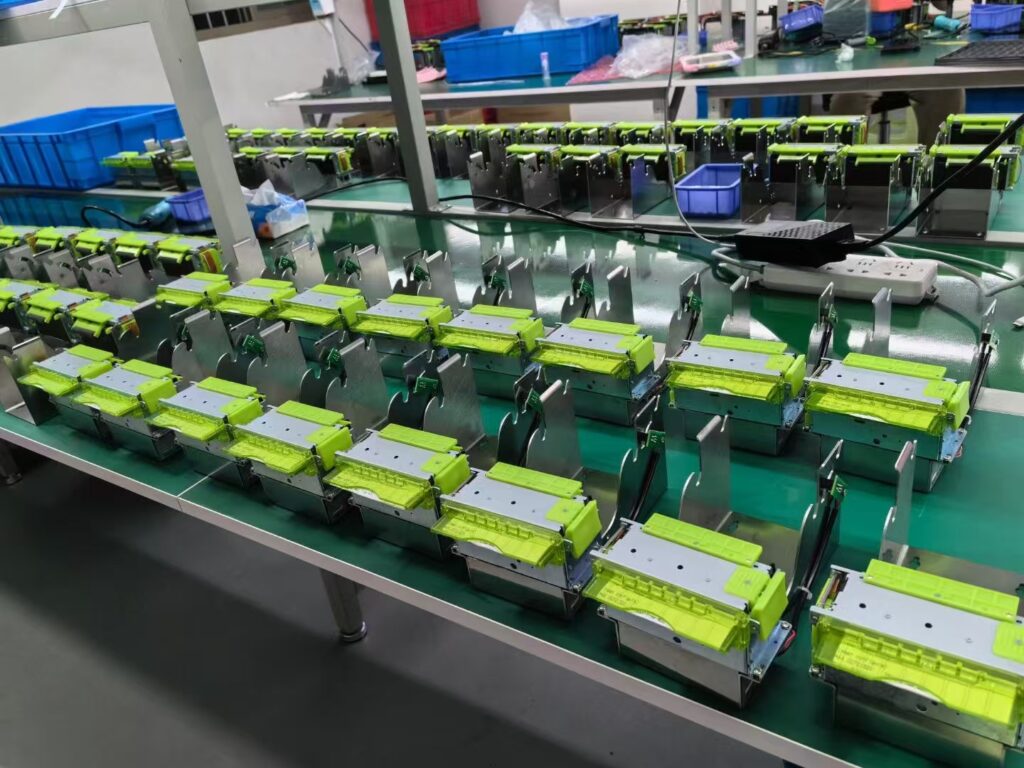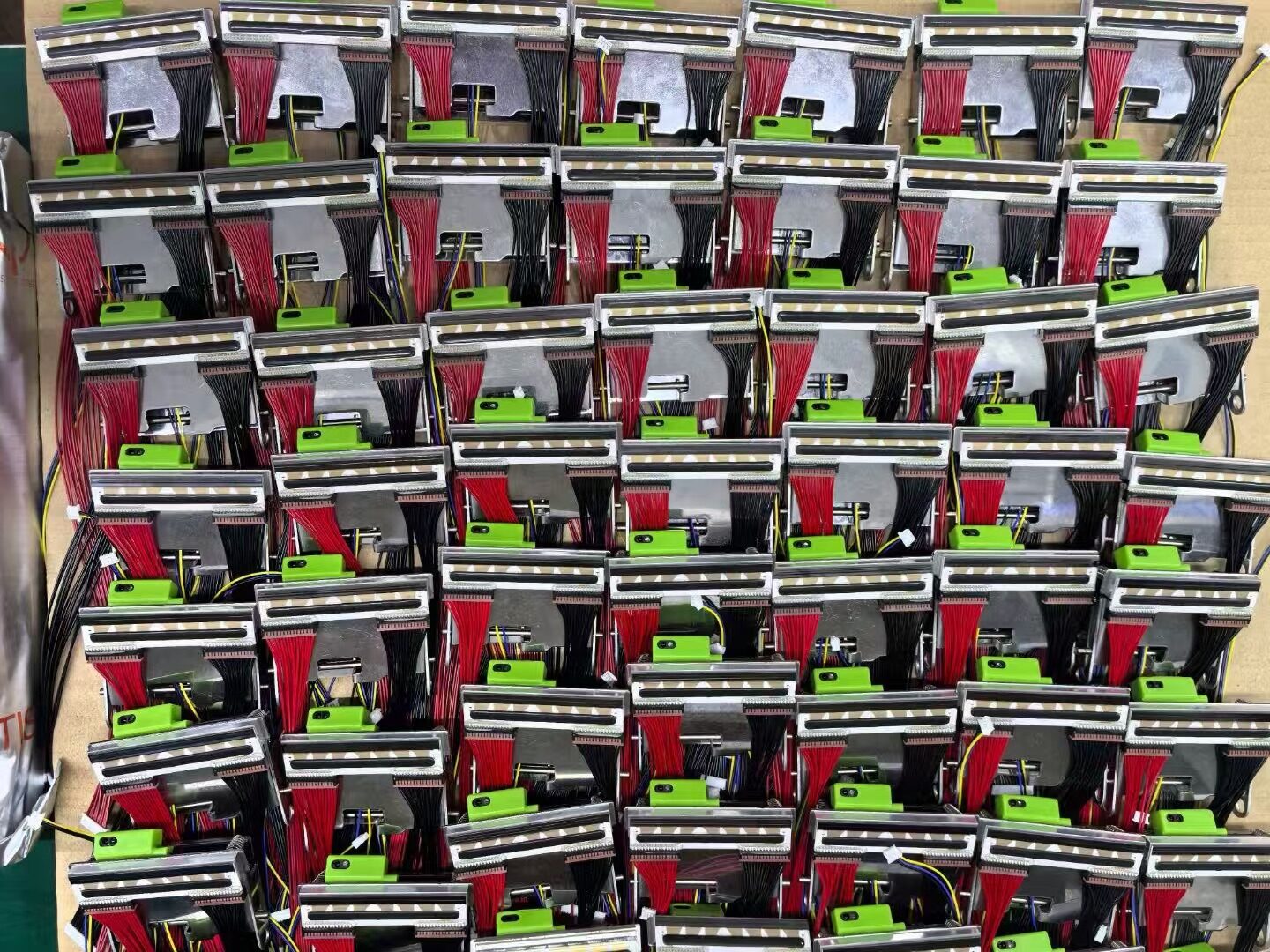Introduction:thermal printer common issues and solutions
Thermal printers are essential tools in many industries, including retail, logistics, healthcare, and self-service kiosks. As an expert in the field, I have seen firsthand how these printers can greatly improve operational efficiency. However, users often encounter common issues that can affect the printer’s performance and longevity. In this article, I’ll walk you through the most frequent problems and offer effective solutions to help you maximize the lifespan and performance of your thermal printer.

Blurry Printouts? Use High-Quality Paper and Clean the Printhead Regularly
Problem:
Blurry or faint printouts are one of the most common complaints among users of thermal printers. This issue is especially frustrating when printing barcodes or small text, which are often required in logistics, healthcare, or retail environments.
Causes:
- Low-Quality Thermal Paper: If the paper is not coated correctly or has poor quality, the printhead may struggle to create clear, sharp prints.
- Dirty or Worn Printhead: Dust, residue from paper, or ink can accumulate on the printhead over time, affecting print quality.

Solution:
- Use High-Quality Paper: Always opt for premium thermal paper with a smooth, consistent coating. This ensures that your printouts are crisp and clear every time.
- Clean the Printhead: Regularly clean the printhead to remove dust, dirt, and residue. You can use a dedicated printhead cleaning sheet or solution for optimal maintenance.
Real-Life Example:
A major retail chain experienced blurry barcodes when using low-quality thermal paper. After switching to a higher-grade paper and implementing regular printhead cleaning, print quality improved dramatically, and barcode scanning accuracy increased.
Paper Jams or Paper Not Feeding? Master the Correct Paper Loading Technique
Problem:
Paper jams or paper not feeding properly into the printer are frustrating problems that can significantly slow down productivity, particularly in high-volume environments like logistics or retail.
Causes:
- Incorrect Paper Loading: Misalignment of the paper, incorrect roll size, or poorly loaded paper can cause feeding issues.
- Clogged Paper Feed Mechanism: If dust or paper particles build up around the sensors, the printer might not feed paper correctly.
Solution:
- Proper Paper Loading: Always ensure the paper is loaded correctly and aligned straight in the paper tray. The paper should fit properly within the printer’s specifications to avoid jams.
- Enable Anti-Jam Features: Our PM-801 model features built-in anti-jam and anti-pull-back functionality, significantly reducing the chances of paper getting stuck.
Real-Life Example:
A healthcare provider experienced frequent paper feed issues in their receipt printers. After re-aligning the paper and enabling the printer’s anti-jam features, the issue was resolved, leading to less downtime and smoother operations.
Slow Printing Speed? Customize Programs for Faster Printing
Problem:
In environments where speed is crucial, such as at retail checkouts or in warehouses, slow printing speeds can disrupt workflows and lead to customer dissatisfaction.
Causes:
- Complex Print Jobs: Large graphics or high-density text can slow down printing.
- Outdated Firmware: Printers that have not been updated with the latest firmware may experience slower printing speeds.
Solution:
- Update Printer Firmware: Always ensure that your printer is running the latest firmware version. Firmware updates often address performance issues and improve printing speed.
- Customize Print Programs: By customizing printing programs to fit your specific needs, you can increase print speed while maintaining high print quality. Our technical support team can help tailor print programs for optimal efficiency.
Real-Life Example:
A logistics company faced slow printing speeds when printing barcode labels. After updating the firmware and implementing a customized print program, printing speeds improved from 15 seconds per label to just 8 seconds, significantly increasing operational efficiency.
Connectivity Issues? Troubleshoot and Fix Printer Communication Problems
Problem:
Connectivity issues, such as the printer not being recognized by the computer or intermittent disconnections, can cause disruptions in business operations.
Causes:
- Driver Issues: An outdated or incorrectly installed driver can prevent the printer from being recognized by the system.
- Damaged or Loose Cables: Faulty cables or loose connections between the printer and computer can result in communication failures.
Solution:
- Check Printer Drivers: Ensure that the latest driver for your printer is installed. This is crucial to ensure compatibility with your operating system.
- Inspect Cables and Connections: Check that all cables are properly connected and in good condition. If needed, replace damaged cables to restore stable connectivity.
Real-Life Example:
A retail business encountered connectivity problems with their thermal printers. After updating the printer drivers and replacing faulty USB cables, the printers started working perfectly without any further interruptions.
Garbage Output? Solve Encoding and Format Issues
Problem:
Sometimes, users may find that their printouts appear as unreadable characters or garbage text. This issue is particularly common when dealing with non-ASCII characters or special symbols.
Causes:
- Incorrect Character Encoding: If the printer is not set to the correct character encoding, it might fail to print special characters such as Chinese or other non-ASCII characters.
- File Format Mismatch: If the file format being printed is not compatible with the printer, the output may be garbled.
Solution:
- Set Correct Encoding: For non-ASCII characters like Chinese, ensure that the printer is set to support the correct encoding (e.g., GBK for Chinese characters).
- Convert to Compatible File Formats: Ensure that the file is in a format compatible with your printer, such as ESC/POS for receipt printing or TSPL for label printing.
Real-Life Example:
A restaurant experienced issues when printing menus with Chinese characters. After adjusting the encoding to GBK and converting the files to the ESC/POS format, the problem was resolved, and the printouts were clear and accurate.
Conclusion: Maximizing Thermal Printer Performance and Longevity
Thermal printers are invaluable in industries such as retail, healthcare, and logistics. By addressing common issues like blurry printouts, paper jams, slow printing speeds, connectivity problems, and encoding issues, you can significantly improve the performance and lifespan of your thermal printer. Key steps such as using high-quality paper, cleaning the printhead, enabling anti-jam features, updating firmware, and customizing print programs will ensure optimal printer functionality.
For businesses looking to maximize printer performance and minimize downtime, implementing these solutions will lead to increased efficiency and customer satisfaction. If you encounter persistent issues or need customized support, don’t hesitate to contact our technical team for tailored assistance.

